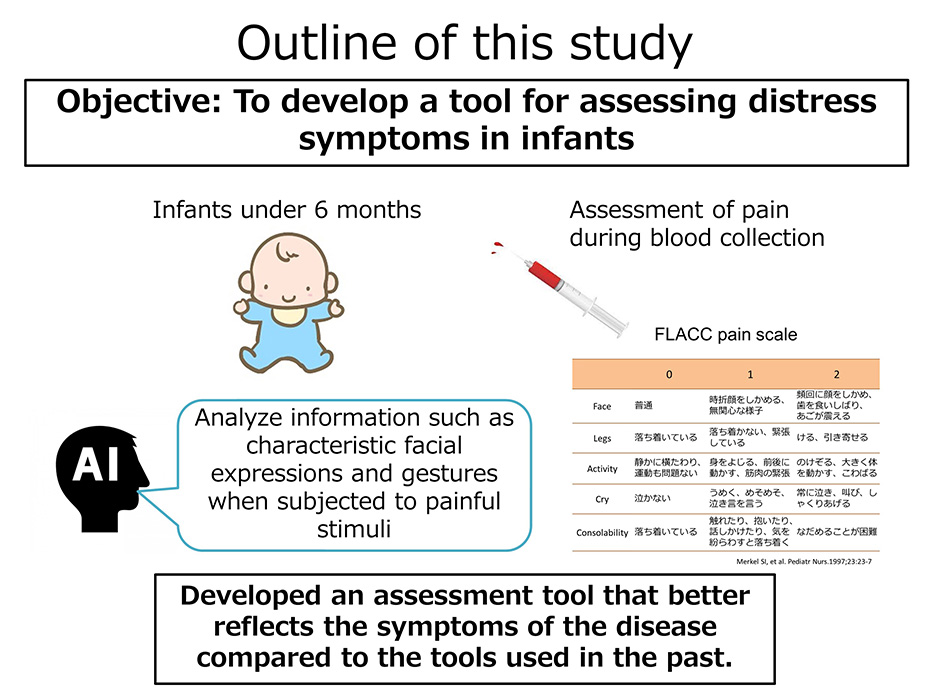
- トップ
- > English
- > Researchers
- > Research Institute
- > Achievement
- > data_science
- > Development of an AI-based infant symptom assessment tool
Development of an AI-based infant symptom assessment tool
It is believed that the gold standard for pain assessment is the subjective complaints of the patient. In a systematic review of pain assessment tools for children by Baeyer et al, FLACC, which consists of facial expression, foot movement, activity, crying, and ease of care, and CHEOPS, which consists of crying, facial expression, complaint, posture, foot movement, and touching of the painful area, were reported as Level of Evidence I (well-established assessment tools). However, there is a need for a more accurate evaluation method. It is estimated that more than 80% of children suffering from life-threatening diseases have some kind of symptoms, and proper evaluation and intervention may lead to improvement of QOL of patients and their families. Therefore, we will conduct research with the goal of developing a more accurate tool for symptom assessment in infants who cannot verbally express their symptoms. Specifically, in the blood collection room at the National Center for Child Health and Development, infants under six months of age will be video-taped before and during blood collection. The facial expressions and body movements caused by the pain before and at the moment of needle insertion will be analyzed by AI, and the characteristic facial expressions and body movements that occur during pain will be analyzed to find items. At the same time, two evaluators will watch the video and evaluate the results using the existing FLACC and CHEOPS, and compare the results.
- FLACC (Face, Legs, Activity, Cry, Consolability)
FLACC (Face, Legs, Activity, Cry, Consolability) can be used for infants and consists of 5 items (facial expression, leg movement, activity, crying, and ease of care). it has fewer items than CHEOPS and is simpler. It has been shown to be reliable and valid. - CHEOPS (Children's Hospital of Eastern Ontario Pain Scale)
CHEOPS (Children's Hospital of Eastern Ontario Pain Scale) can be used for children aged 4 months to 17 years, and consists of 6 assessment items (crying, facial expression, complaints, posture, leg movement, and touching the painful area). It does not require the "ease of care" of the FLACC, and has the advantage of being based only on directly observable behaviors. It has been shown to be reliable and valid.
This is a pilot study that will lead to a new tool for infant symptom assessment. The results of this study will be used as a basis for further large-scale prospective studies, which will eventually lead to the creation of a tool.




